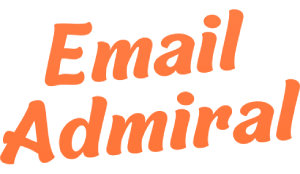In the often complex and acronym-ridden realm of email marketing, one term stands out for its powerful implications on campaign success: CTOR. Click-To-Open Rate, or CTOR, is a critical metric that provides invaluable insights into the effectiveness of your email content. But what exactly is CTOR, and why should you care? Let’s dive in.
What is CTOR?
CTOR, or Click-To-Open Rate, is a crucial metric in email marketing. It calculates the percentage of recipients who clicked on a link within your email out of those who actually opened the email. Simply put, CTOR is a ratio that measures how many of your engaged recipients (those who opened the email) were intrigued enough by your content to interact further by clicking a link.

Why CTOR Matters
CTOR provides a concentrated measure of engagement by combining two key metrics: open rates and click rates. Open rates give you an idea of how many people opened your email, which can indicate the effectiveness of your subject line. Click rates tell you how many recipients clicked on a link, showing general engagement. However, by combining these two, CTOR offers a clear picture of how well your email content resonates with those who opened the email. A high CTOR indicates that your content is not only reaching your audience but also striking a chord with them.
Tips and Strategies for Boosting Your CTOR
Improving your CTOR often involves a blend of strategic content creation, compelling calls to action (CTAs), and thoughtful email design. Here are some tips to help optimize these areas:
Craft Engaging Content
The first step to boosting your CTOR is to ensure your content is relevant, valuable, and engaging. This means understanding your audience’s needs and interests and crafting content that addresses them. If your content resonates with your audience, they’re more likely to interact with it.
Design Persuasive CTAs
Your CTAs are pivotal in directing your audience to take the desired action, whether that’s visiting your website, purchasing a product, or signing up for a service. A poorly designed CTA might say something like “Click Here,” which doesn’t provide much context or incentive. On the other hand, a strong, action-oriented CTA might say “Discover Our Exclusive Deals!” This not only tells the reader what they’re clicking on but also builds excitement and anticipation.
Optimize Your Email Design
A well-designed email can make all the difference when it comes to CTOR. Your email should be visually appealing, easy to navigate, and mobile-friendly. Use images strategically to draw attention and break up text, and make sure your links and CTAs are easy to find and click.
Deep Dive: Practical Examples of CTAs and Their Impact on CTOR
Let’s take a closer look at how CTAs can affect your CTOR. Suppose you send out an email with the CTA, “Click Here.” This CTA is vague and does not provide a clear incentive for the recipient to take action. This might result in a low CTOR as recipients may not be motivated to click.
Now, consider an alternative CTA: “Get Your 20% Discount Now!” This CTA is specific, action-oriented, and offers a clear benefit to the recipient. As a result, you’re likely to see a higher CTOR because recipients have a compelling reason to click.
Conclusion: The Integral Role of CTOR in Email Marketing Success
Understanding and monitoring your CTOR is key to evaluating the success of your email marketing campaigns. While open rates and click rates offer valuable insights, CTOR enables you to measure how effectively your content engages those who actually open your email. By optimizing your content, CTAs, and email design, you can significantly boost your CTOR and, ultimately, achieve greater success with your email marketing efforts.
As we move forward in the digital age, email marketing will continue to evolve. With the rise of automation and AI-driven personalization, businesses will have more tools at their disposal to engage their audience and improve their CTOR. By staying ahead of these trends and focusing on the metrics that matter, you can ensure your email marketing strategy remains effective and competitive in the years to come.
Remember, email marketing is not just about sending emails; it’s about building relationships with your audience and offering them value. By doing so, you not only increase your CTOR but also foster trust, loyalty, and long-term success for your business.




